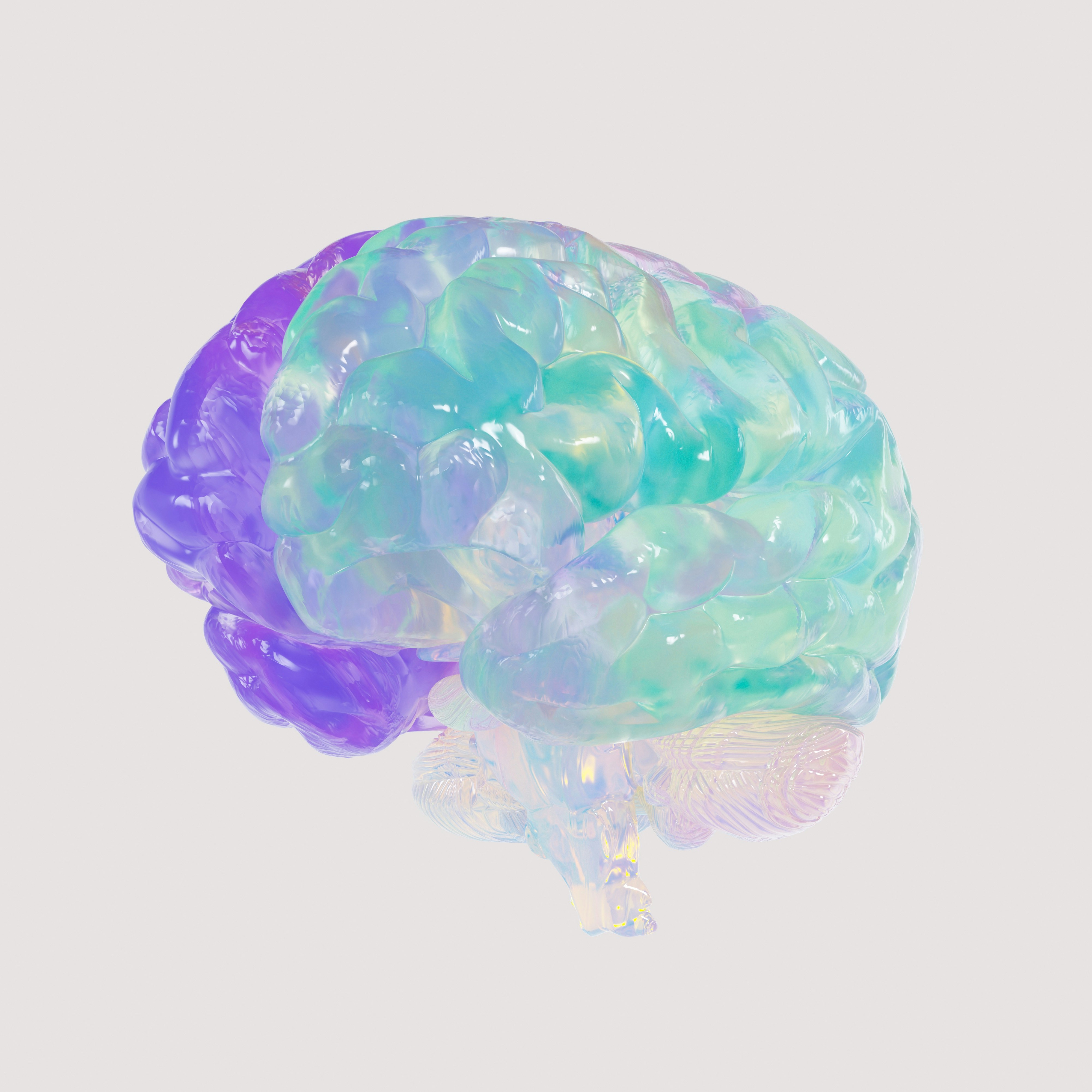Your Brain's Hidden Sugar Problem Changes Everything
Discover why your brain hoards sugar and the link to Alzheimer's. Learn about glycogen's role and how dietary rhythms could unlock brain resilience.


Your brain has been hoarding sugar. And that hoarding might be the key to understanding why some people develop Alzheimer’s while others don’t. This clears up why some with the ApoE4 gene get it and others don't despite having the gene.
A Nature Metabolism study just revealed something that changes how we think about brain health entirely. The research shows that tau protein, the infamous protein that tangles in Alzheimer’s patients, physically binds to glycogen, trapping sugar stores inside your neurons.
This creates a vicious cycle that starves your brain of its most powerful protection system.
The Glycogen Trap
For years, we’ve understood Alzheimer’s as type 3 diabetes—a metabolic brain disorder where sugar regulation goes wrong. We’ve seen how elevated blood sugar creates advanced glycation end products (AGEs), compounds that essentially “caramelize” delicate brain proteins like grill marks on a chicken breast.
But this new research reveals something more fundamental.
The problem isn’t just sugar damage from the outside. Your brain stores glucose as glycogen inside neurons and glial cells, creating an internal fuel reserve for protection and repair.
When tau proteins accumulate, they bind directly to these glycogen stores, preventing breakdown. The sugar gets stuck.
This matters because glycogen breakdown doesn’t just provide energy. It feeds the pentose phosphate pathway, your brain’s primary antioxidant defense system.
When glycogen can’t be mobilized, this entire protective pathway stalls.
The Antioxidant Connection
Your brain uses glycogen differently than the rest of your body. Instead of burning it for quick energy, neurons redirect glucose through the pentose phosphate pathway to produce NADPH—the molecule that powers glutathione recycling and oxidative stress protection.
Think of NADPH as your brain’s primary currency for cellular repair.
When tau traps glycogen, NADPH production drops. Oxidative stress rises. Protein clearance systems fail. More tau accumulates, binding more glycogen, creating a downward spiral of neurodegeneration.
This explains why we see neuroimmune reactivity and metabolic dysfunction together in clinical practice. The immune system starts producing antibodies against tau, RAGE proteins, and glial markers. These are all signs that the brain’s protective systems are overwhelmed.
The Neural Zoomer test, showing antibodies to brain tissue, reveals these patterns years before cognitive symptoms appear.
Why Dietary Restriction Works
The research also explains why dietary restriction protects against neurodegeneration. When you restrict calories strategically, you activate glycogen phosphorylase through cAMP-mediated protein kinase A.
This enzyme breaks down trapped glycogen, freeing glucose to flow through the pentose phosphate pathway.
But here’s the key distinction: effective dietary restriction isn’t about eating less. It’s about eating with rhythm and precision to activate specific metabolic pathways.
Random calorie cutting, or worse, a poor diet in general creates metabolic suppression. Strategic restriction with optimal nutrition creates metabolic efficiency.
The Rhythm Reset Approach
Clinical experience shows that restoring glycogen clearance requires more than just fasting windows like "intermittent fasting". You need to re-synchronize your entire neuro-metabolic orchestra through circadian biology.
This means aligning meals, movement, and rest with natural light cycles. Morning sun exposure stimulates cortisol awakening response. Evening dim light promotes melatonin release. These signals regulate metabolic timing and synchronize mitochondrial activity with your internal clock.
The protocol combines structured fasting with mitochondrial support nutrients like B2 and B3—cofactors that shuttle electrons through energy pathways. Botanical compounds like lemon balm and gotu kola enhance pentose phosphate pathway activity while reducing neuroinflammation.
Heat and cold exposure activate adaptive responses tied to vagal tone and stress resilience. This engages the hypothalamus and brainstem circuits that regulate circadian clock genes and immune surveillance.
What Metabolic Transformation Looks Like
When patients move from metabolic suppression to efficiency, the changes appear first in lab markers, then in daily experience.
Initially, we see elevated anti-RAGE antibodies, positive tau antibodies, and increased S100B—signs of chronic glycation stress and blood-brain barrier dysfunction. The OAT (organic acid test) shows elevated lactate and pyruvate, indicating metabolic inflexibility and reliance on inefficient energy pathways.
As glycogen clearance resumes, anti-RAGE levels drop. Neuro-autoantibodies stabilize. S100B normalizes, indicating improved glial function and blood-brain barrier integrity.
The OAT reveals improved lactate-to-pyruvate ratios (mitochondrial energy production) and normalized TCA cycle intermediates. Neurotoxic quinolinic acid decreases, suggesting better NAD salvage pathway function. Glutathione markers improve, driven by restored NADPH production.
But the real transformation happens in lived experience.
Resilience Reactivated
Patients describe the shift as fog lifting. Mental clarity returns. Memory recall improves. Word-finding issues diminish. Their brain finally “turns on” in the morning instead of lagging for hours.
Energy becomes stable rather than surging and crashing. The brain taps into cleaner fuel through optimized metabolic pathways instead of relying on inefficient, stressed-out loops.
Emotional regulation improves as NADPH and glutathione production normalize. Inflammation decreases in key brain areas like the amygdala and anterior cingulate. Patients report feeling more grounded, less reactive, better able to handle stress without spiraling.
Sleep deepens and circadian rhythms restore. Because glycogen storage and clearance link tightly to circadian genes, patients notice hunger cues, bowel movements, and energy syncing to healthier patterns.
Their bandwidth returns. Simple tasks and social interactions no longer exhaust them. They can handle multitasking, conversation, and exercise without shutting down.
Most importantly, they describe a felt sense that their body is no longer in crisis. Less urgency, less panic. Their nervous system feels like it’s taken a deep breath and reset.
The Blueprint for Brain Resilience
This research confirms what clinical experience has shown for years: your brain isn’t broken—it may just be blocked.
Neurodegeneration doesn’t begin with bad genes or sudden crisis. It starts with disrupted rhythm, impaired energy flow, and confused immune signaling. These are things you can influence.
Your brain works actively every day to protect itself by clearing waste, managing fuel, calming inflammation, and adapting to stress. When that process falters, the answer isn’t symptom suppression. It’s removing blockages, restoring rhythm, and reactivating resilience.
The first step isn’t complex protocols or expensive testing. It’s reclaiming your daily rhythm.
Wake with sunrise. Move your body to stimulate breath and circulation. End your day with intentional downshifting with slow breathing, calming herbal tea, digital sunset that cues your nervous system to wind down.
These simple signals re-anchor circadian biology, clear cortisol buildup, and nudge your brain out of survival mode. This rhythmic foundation creates physiological space for deeper repair.
Your brain has a blueprint for resilience. It was built with recovery in mind. You don’t have to wait for symptoms to worsen before acting. You can start now, with rhythm.
The healing power may already be available inside you, just waiting to be unlocked.
Ready to feel like you again?
* Your next step toward feeling better starts today. At The Dearing Clinic we make it simple to get started with care that truly fits your life. Book your visit now and let’s design a plan that restores your energy, relieves your pain, and helps you enjoy more of what matters most.


